FiiO Q5S Modular DAC/AMP Review – Blessing In Smol Package
FiiO Q5s is the update of the older Q5, but now has DSD Decoding, Bluetooth 5.0, and 4.4mm Balanced outputs from the get-go. Priced at 350 USD, this modular USB DAC/AMP has iFi xDSD, Earmen TR-AMP, and xDuoo XD-10 Poke as the main competitors. Based on popular request, I will also add a comparison to Chord Mojo. The main pairings in this review will be with FiiO FH7, Clear Tune Monitors Da Vinci X, and HIFIMAN Sundara, as those all should reveal what Q5S is capable of, and where things changed from the previous generation.
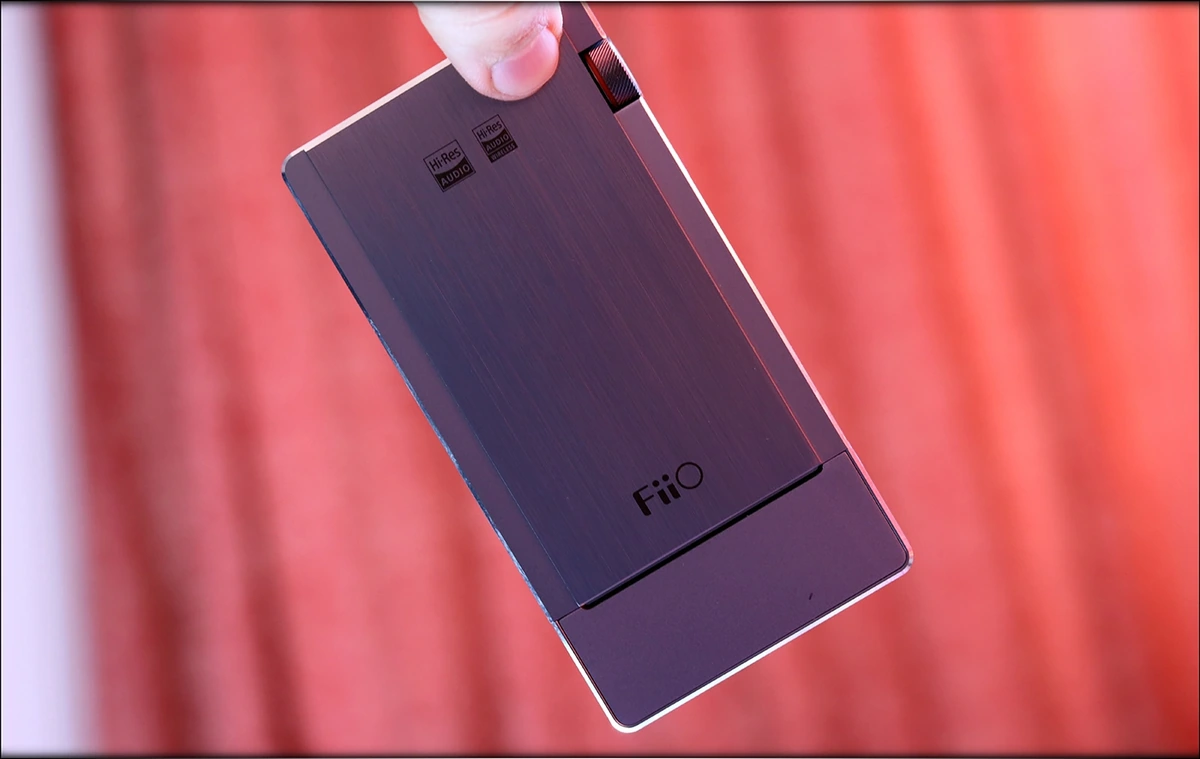
Introduction
You can’t be a music lover, or an audio fan without having heard the name FiiO at least once in your lifetime. They started way before the golden age of portables, when music was still mostly about using earbuds connected to a smartphone. Before the days of Cowon and when things started getting a turn for the Fun, appeared FiiO, a company making very affordable, yet high-quality, high-power amplifiers, the size of match boxes.
Things evolved, and through the years, they ended up becoming one of the largest and best-known audio devices producers in the entire world. At this point, they are so large, that it is best to order their products directly from their agents and official sellers, since they can serve the warranty much faster. Especially with COVID-19 happening, you will get reliable help locally, but packages are delayed, and things are moving very slowly through the customs of certain countries, so for best results when ordering the products, getting the products form official resellers would be best.
It should be noted that I have absolutely no affiliation with FiiO. I’d like to thank FiiO for providing the sample for this review. This review reflects my personal experience with FiiO Q5s. Every opinion expressed is mine and I stand by it, the purpose of this review is to help those interested in FiiO Q5s find their next music companion.
Product Link
You can get FiiO Q5s from www.amazon.com here: https://www.amazon.com/FiiO-Bluetooth-Amplifier-Computers-Coaxial/dp/B07TXNDZHZ/
Packaging
First things first, let’s get the packaging out of the way:
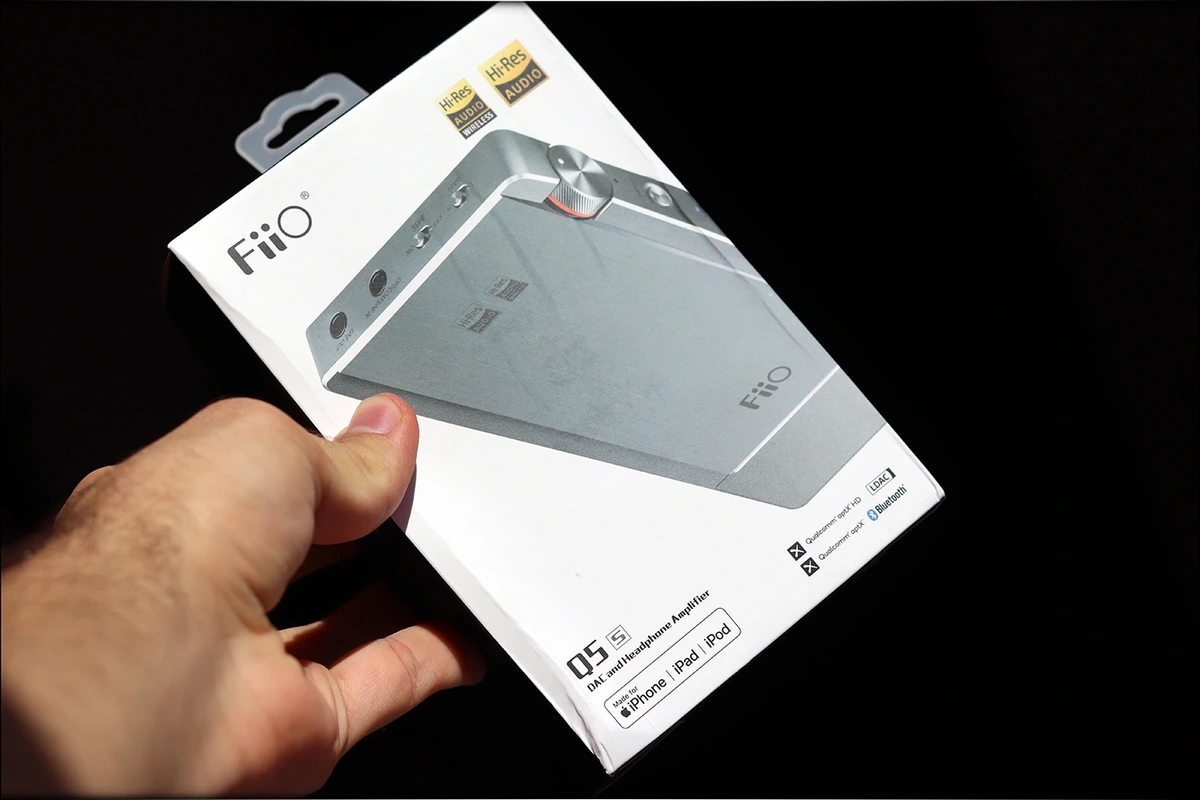
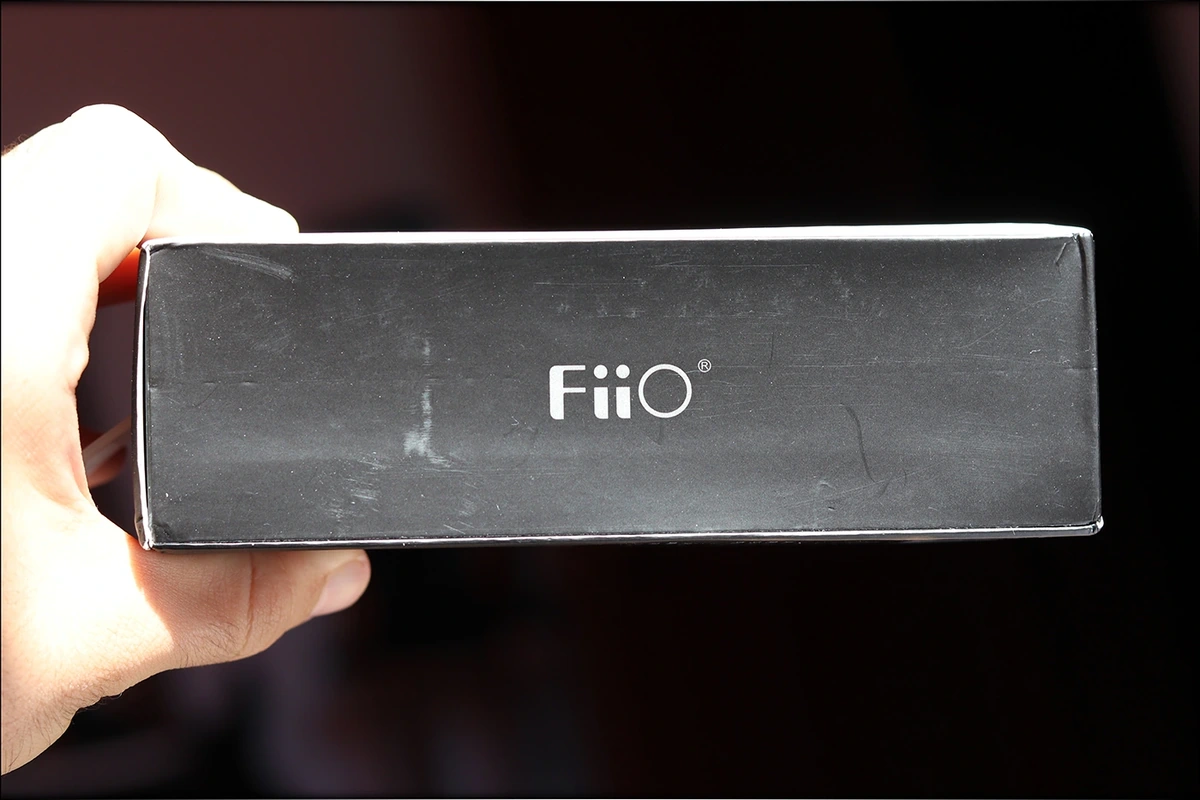
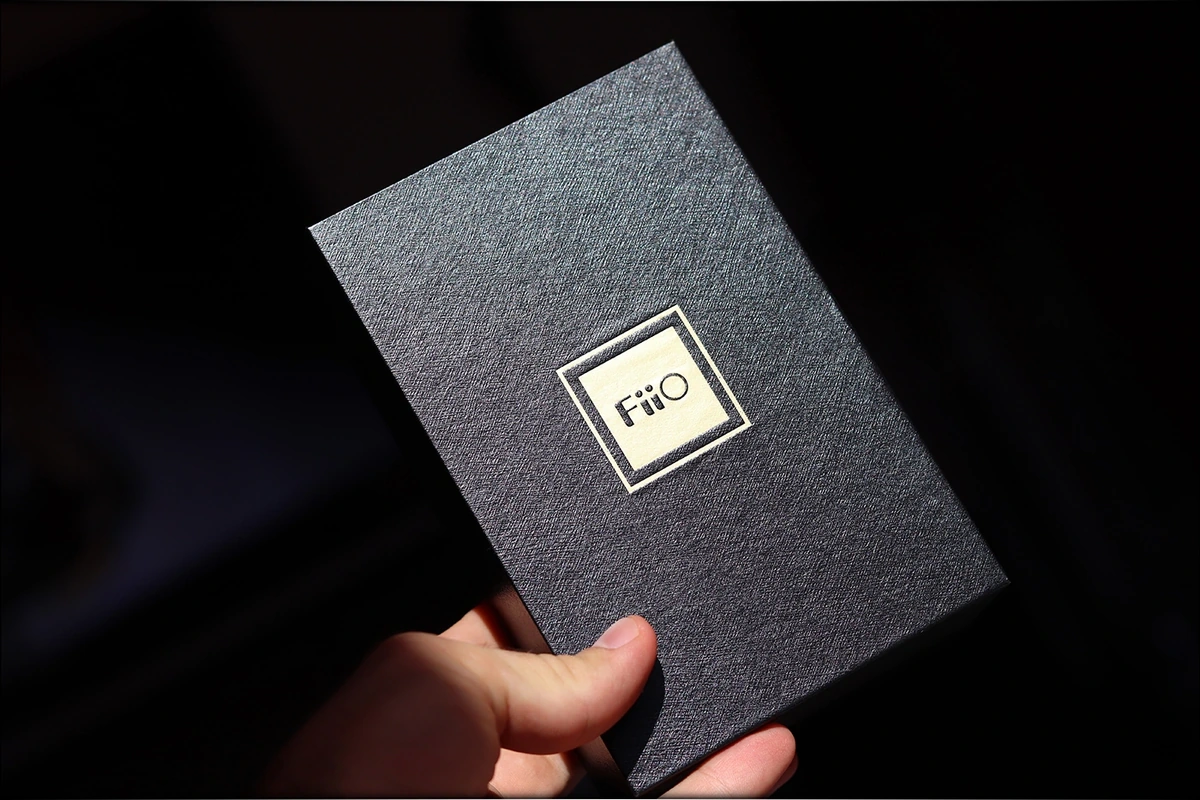
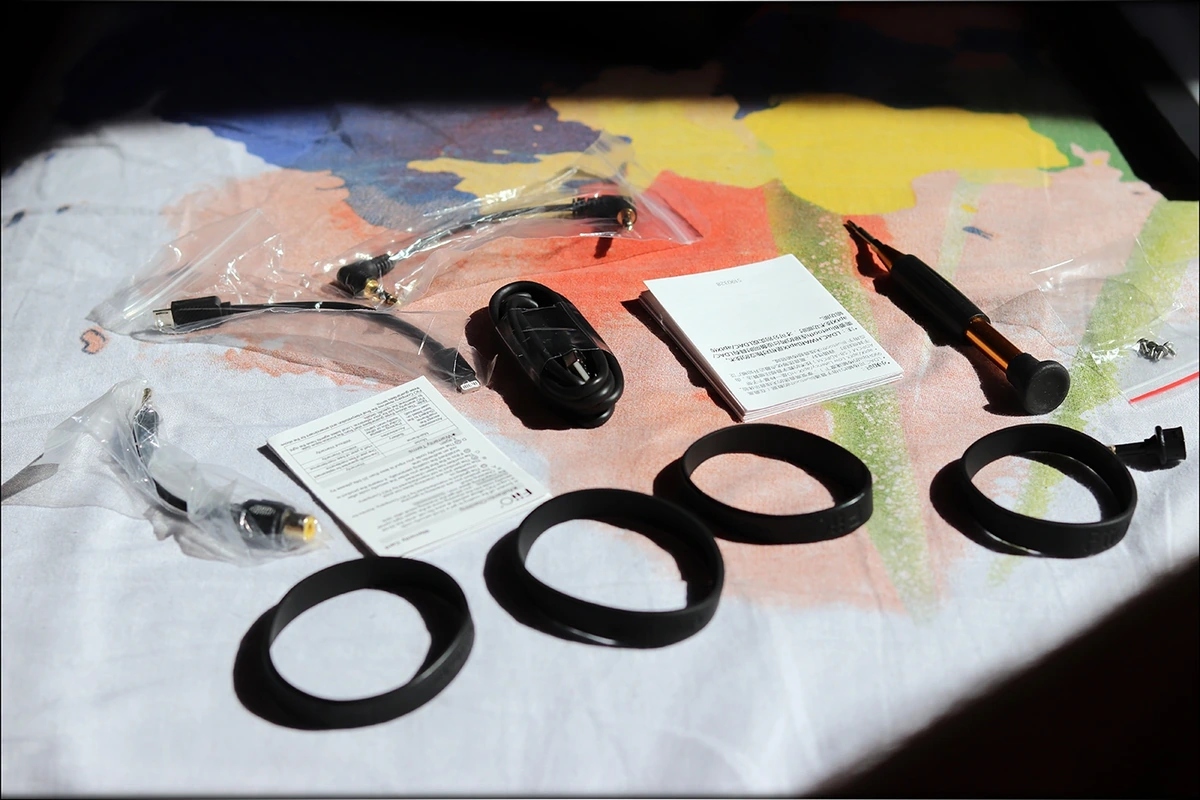
FiiO always, and I mean, always will have an interesting package. Even for the little Jade EA3, a little IEM made by a FiiO Sub-Brand, they managed to get a nice package, despite that one costing a very affordable 40 USD.
With Q5S, the device that has to be the best price / performance ratio, FiiO went all-out, and packaged in some of the best tech they had, along with a lot of extras, to make your experience with Q5s the best they could. The whole box may even look confusing to newcomers at first, but let’s dig in and explain.
There’s a selection of a 3.5mm to 3.5mm line cable, so you can use Q5s as an amplifier, from an external DAC. There’s also a USB cable, and an iphone cable, so you can connect Q5s to any iPhones as the external DAC/AMP. There’s also a COAX cable. There’s a screwdriver, so you can replace the amplifier modules of Q5s.
There are two sets of rubber bands, so you can strap Q5S to any smartphone, regardless of the size. This is a good thing, and I forgot to mention this in my Earmen TR-AMP video review, but one strap may not be enough, and two are usually better for DAC/AMPs.
Extra Screws, for the modular AMP modules, and an adapter for the optical input are also provided by FiiO, along with the manuals of Q5s.
Overall, I think the package for Q5s is one of the best out there for this price range, and easily competes with the package of xDSD. The little pouch gets the least highlight, because you cannot use Q5s while it is in the pouch, but it is still interesting. There’s also a rubber separator, so you don’t scratch your smartphone or Q5s. As far as USB cables go, a Type-C to microUSB is the only one I don’t see in there, but FiiO sells those for a few USDs.
Technical Specifications
Model:Q5s
Color:Titanium
Weight: About 195g
Dimensions:About 124mm x 64mm x 16mm
Audio Input:Standard 3.5mm Port (Shared Line / Coaxial/ Optical in)
Digital Coaxial Input Port:Standard 3.5mm Port (Shared Line / Coaxial/ Optical in)
Digital/Optical Input Port
Standard 3.5mm Port (Shared Line / Coaxial/ Optical in)
USB Port
Micro USB(11pin)
Data exchanging, Charging, Firmware upgrade
Analog Input port(LO)
Standard 3.5mm stereo jack
Headphone Output Port
Standard 3.5mm stereo jack
Balanced Output Port:2.5mm port
Recommended Headphone Impedance:16~150Ω(PO), 16~300Ω(BAL)
Channel Balance:0.1 dB
Gain:Yes(High/Low)
Bass Boost:Yes
Volume Control:Potentiometer(ADC Sampling)
APP interconnection:Supports setting through App
Bluetooth codec indication:Yes
Supports connection to Sony Walkman players:Yes
Sampling rate indication:Yes
Deep-sleep:automatic stand-by, can be controlled on App
Firmware upgrade:System firmware and Bluetooth version can be upgraded through USB
Power Supply;DC5V 2A (Recommended)
Battery Capacity:3800 mAh
Charge Time ≤3.5 h (DV5V 2A)
Battery Life
>24 h (AUX IN)
>9.5 h (USB IN)
>9.5 h (OPT IN)
>9.5 h (COAX IN)
>9.5 h (Bluetooth IN)
Charging Indicator:The side blue light flashes, blue light stays on after it’s fully charged.
Low Battery Warning:Red light flashes twice every 3 seconds
Bluetooth:Bluetooth 5.0, supports AAC/SBC/aptX/aptX Low Latency/aptX HD/LDAC/HWA
MFi:Yes
Sampling Rate Supported Up to
384kHz/32bit(USB IN)
192KHz/24bit(COAX IN)
96KHz/24bit(OPT IN)
DSD Support(USB IN):DSD64/128/256
Chips Used
DAC: AK4493EQ * 2 , USB: XMOS XU208 , Bluetooth: CSR8675 , LPF:OPA1642×2,Volume IC:NJW1195 OP+AMP:AD8620+OPA926
Line output specifications
THD+N:<0.001% (1 kHz/10kΩ)
SNR:≥115 dB (A-weighted)
Frequency Response:5 Hz~90 kHz(-3dB)
Channel Separation”>97 dB (1 kHz)
Line level:1.8 Vrms
Output power: >220mW(PO/32Ω)/>560mW(BAL/32Ω)
Output impedance: 1Ω
Headphone out: 2.5 + 4.4(Bal) + 3.5(PO) + LINE OUT
Variety of inputs: Micro USB/OPT/COAX/LINE IN
Sampling rate support up to: 768kHz/32Bit
DSD: DSD64/128/256
Bluetooth codec support: AAC/SBC/aptXLL/aptA HD/LDAC
Build Quality/Aesthetics/Functionality
There’s just such a wealth of specifications and FiiO makes it very transparent when you want to know what they used in their products, and what their products can do, and what they can’t. Lately, it’s been kind of what they can do, because they are amazingly well built, yet also manage to do a lot. Q5s makes no exception, and with a full metallic build, with a leather patch on the back, to give it style, it is as impressive as the older Q5 was.
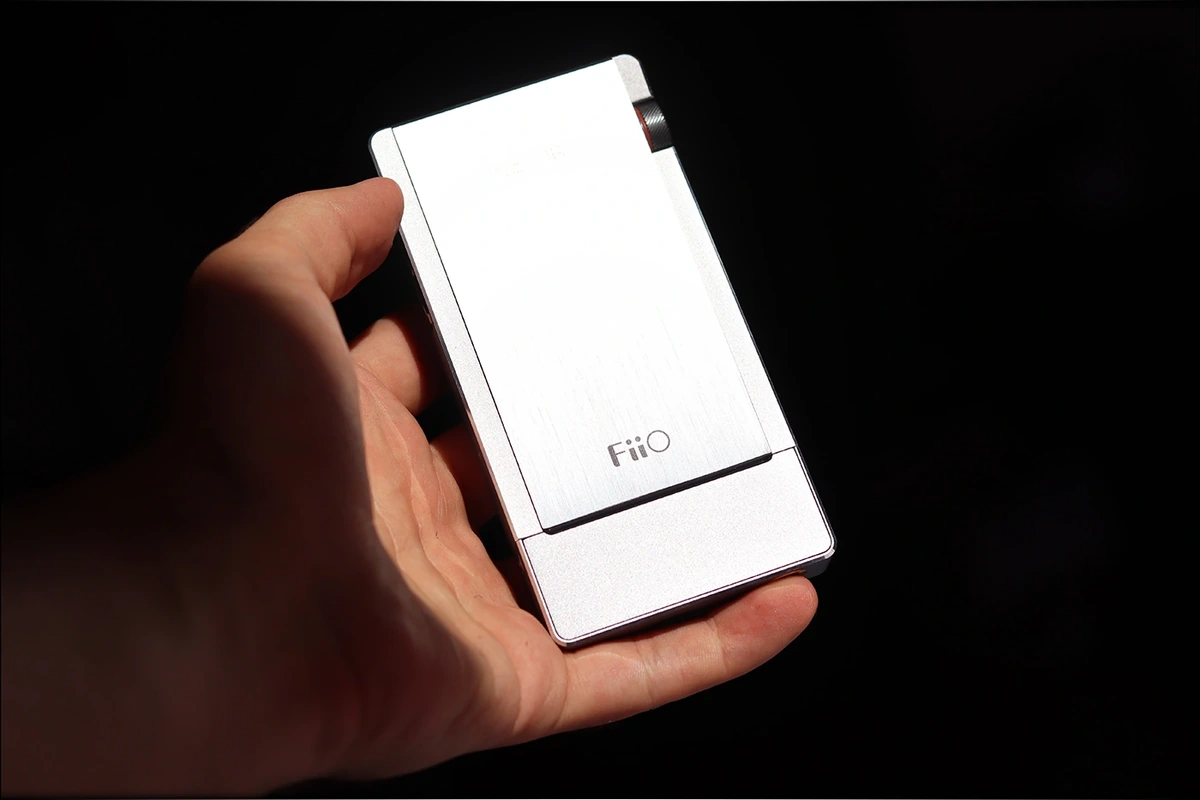
There’s a Blue LED light at the front, which lets you know what input is active. But when you look at the buttons, things start to change, because now there’s no power button, and the power on / off is actually the volume wheel, as it clicks after it gets above 8 o’clock, and that is when Q5s is turned on.
There are two flagship-class AK4493EQ Chips inside, and they are powering the multitude of AMP modules, although the module Q5s comes with AM3E. An XUF208 XMOS chip takes care of the USB DAC decoding abilities, and it enables Native DSD decoding, as well as up to 32 Bit / 768kHz in PCM Mode. The CSR 8675 Bluetooth 5.0 Chip allows you to take advantage of all the nice BT codecs, and has one of the strongest, most reliable signals out there.
With Line-In, USB, Optical and Coaxial, you have a swiss army to drive Q5s, but it also has a 2.5mm Balanced, 3.5mm Single Ended, 4.4mm Balanced, and a Line output, making it probably the most versatile device out there in terms of the inputs / outputs ratio. For reference, xDSD has only a 3.5mm Single Ended / Balanced / Line Out combo output. This being said, you can further configure Q5s because it has a multitude of AMP modules available, which can replace the original AM3E it comes with.
I personally only use LDAC, APT-X, APT-X HD, and SB, but for enthusiasts, there’s compatibility with AAC, SBC, aptX, aptX LL, aptX HD, LDAC and even HWA, making Q5s universally compatible in terms of bluetooth.
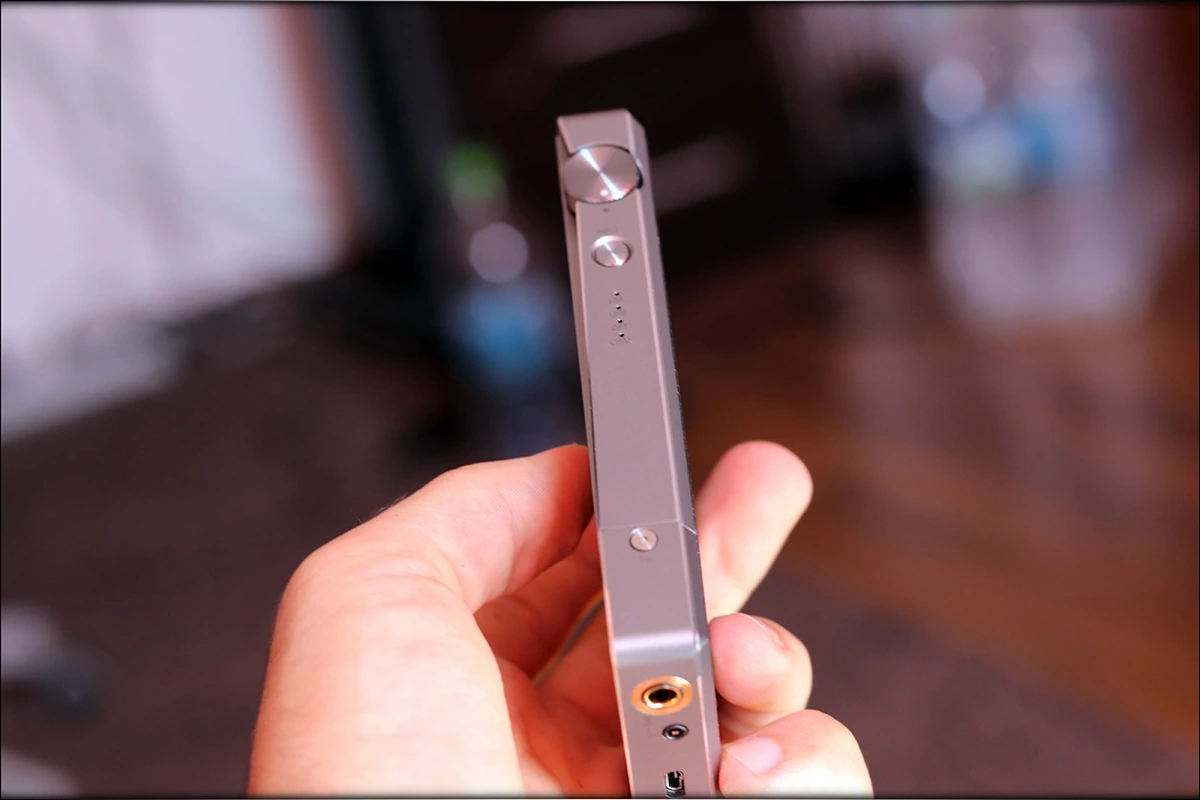
There’s a gain switch, which will let you change between its High and Low gain, but I have it stuck on high, or rather, I never even considered using the low gain, but for those with very sensitive IEMs, it can come in handy. And for bassheads, or “fun” sound lovers, there’s a Bass switch which you can turn on, which will thicken the sound a bit, and give you a little extra push in the lows.
The battery is the same as you see in flagship smartphones, and when using Q5s in USB mode, I was able to achieve about 8 hours on USB, 9 hours on Coax, 20 Hours in Aux Mode, and 8 hours in BT Mode. This is really close to FiiO’s own numbers, and the reason I got slightly lower numbers may be because I tested Q5s on almost full volume at all times. I know it does no service for my hearing, but listening to music is just too fun this way.
Even so, there’s an auto shutdown function, if no input is detected for 10 minutes. Speaking of automatic features, Q5s can detect the power output of your computer’s USB ports, so it will know how much to charge. The same happens when connecting it to a smartphone, and it won’t drain the smartphone’s battery. With a full compatibility with USB 1.0 and 2.0, you can use Q5s even without USB drivers.
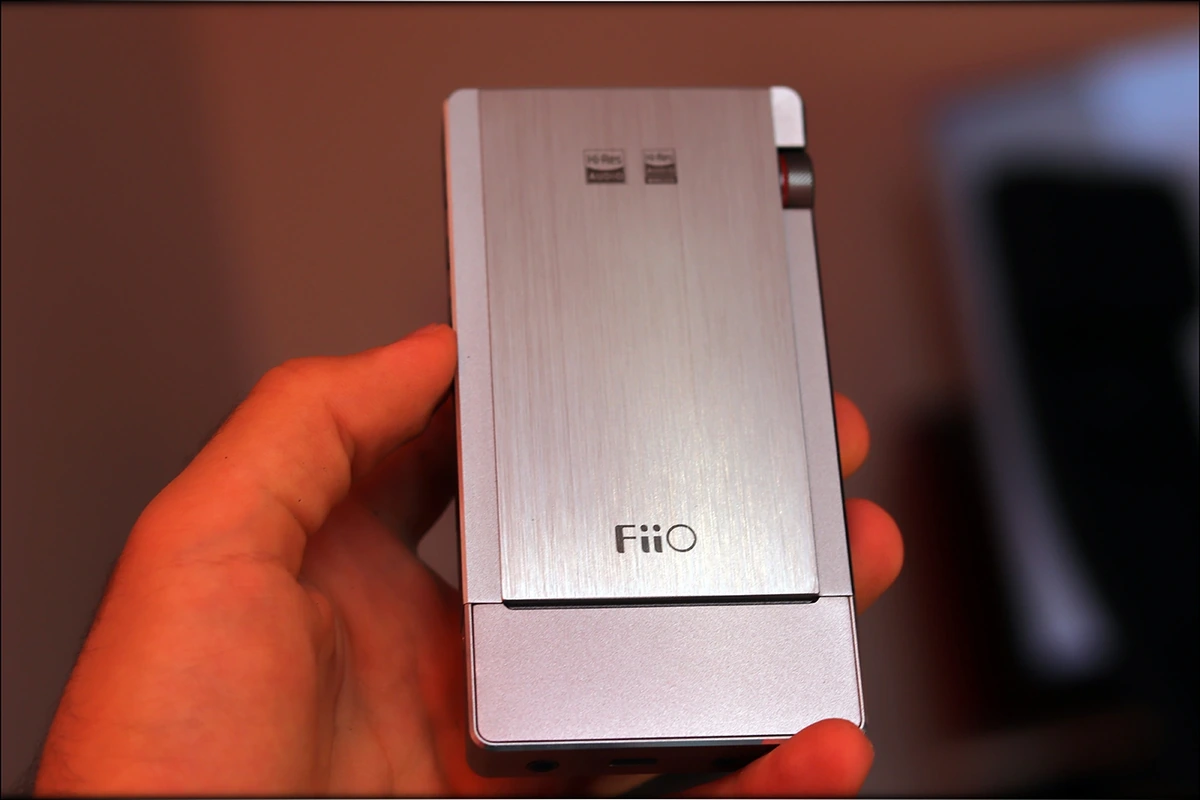
In practice, I would like to notice that it does get warm during usage, but it works pretty well. The USB port being microUSB is outdated at this point, but happily, FiiO includes Type-C connectors with all their other recent products, like BTR5, FiiO M11, FiiO K3, FiiO K5 PRO, and FiiO EH3NC. Pretty much everything else from FiiO comes with Type-C, but to offer proper compatibility with older FiiO Modules that worked for Q5 and X7mkii, they extended the support to include microUSBs port instead.
I experienced no dropouts on Bluetooth, and I also experienced something pleasant, but FiiO products are the ones that are best integrated with ROON and TIDAL, so if you’re looking at doing a lot of streaming, don’t worry and go with FiiO, they always go big with software.
Video Review
https://www.youtube.com/watch?v=bcZ_Mh2WFkU
Sound Quality
The sound of Q5s is fuller, warmer in the mids, compared to Q5, but also more linear, from top to bottom, which means that there’s less treble presence, as well as less bass. Q5s treble is wetter than Q5, which makes things smoother, more refined than the older version. This makes bands like Dance Gavin Dance sound much more musical, and especially Tilian’s voice can sound sweeter and more harmonious with Q5s.
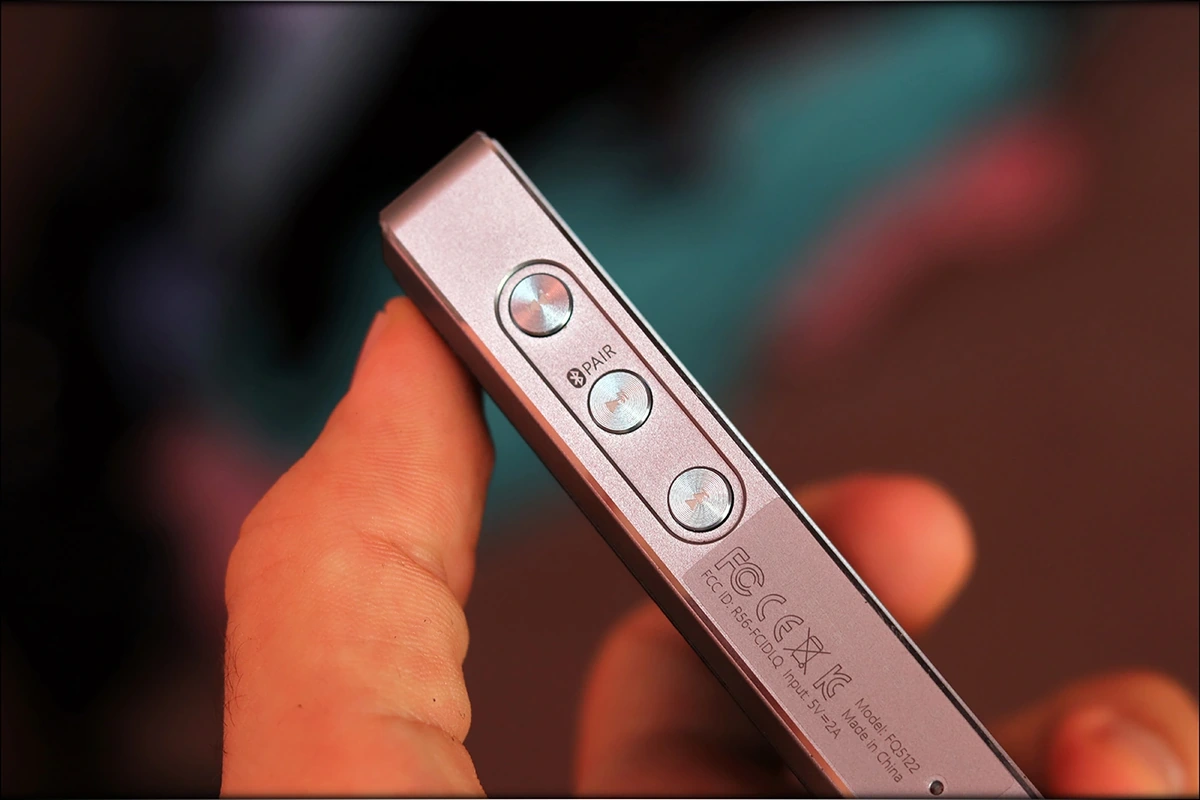
The bass was stronger and had more punch / presence with the older Q5. Q5s tend to be more linear, and this may be caused by the fact that the older AK4490EQ chip sounded fuller and more punchy in all implementations, than the newer AK 4493EQ. To put it better, it is not the presence that was changed, but everything is softer, including the hard edges on textures, which makes music more musical, and more pleasant to listen to, more natural. In return, this also kills some of the impact and punch the older Q5 had. 1
The transition between the bass and the mids is more coherent on Q5s, with a softer overall presentation of everything, where Q5 had a soft mid, but a pretty strong bass. The vocals and everything felt more forward and less forgiving on Q5, and things are more forgiving, less forward, less harsh on q5s, but this makes Q5s less engaging by nature, and you’re slower to start tapping your hand with your music, since it all sounds much easier, more fluid, more refined.
The treble is also rich on Q5s, it is fluid, clean, sparkly, there is excellent detail, but it bears less punch, less dynamics, there’s more detail to be heard, with a more mature presentation. If you like a musical, natural presentation, Q5s went in the right direction. It will work really well for anything that you want to sound musical, the only exception being diehard grindcore fans, who may want their sound more abrasive, or at least as abrasive as possible.
The speed of Q5s is natural, and it feels detailed, clear, crisp, and clean by nature. You won’t have any hiss, even with really sensitive IEMs like FiiO FH7, Campfire Atlas, or Rhapsodio Zombie. It behaves better than xDSD and xCan.
Portable Usage
I’m happy to report that with Q5s you can still use it both portably, and as a desktop-class DAC unit for your larger speaker system, or as your computer’s USB Soundcard. This makes it one of the most reliable products if you want an all-in-one solution, and this has been pretty much the thing with Q5s all along, it is made to be so compatible with everything, has so many inputs and outputs, just the right driving power to replace everything and become your main entertainment center. Especially if you don’t mind connecting and disconnecting cables, it should be pretty perfect for that role. FiiO employs high-quality batteries, so you don’t have to worry about the batteries wearing out, and I could go as far as to say that with the algorithms they employ in their products, the batteries won’t top over, so they won’t overcharge, and wear prematurely due to being used as desktop devices, despite being portables.
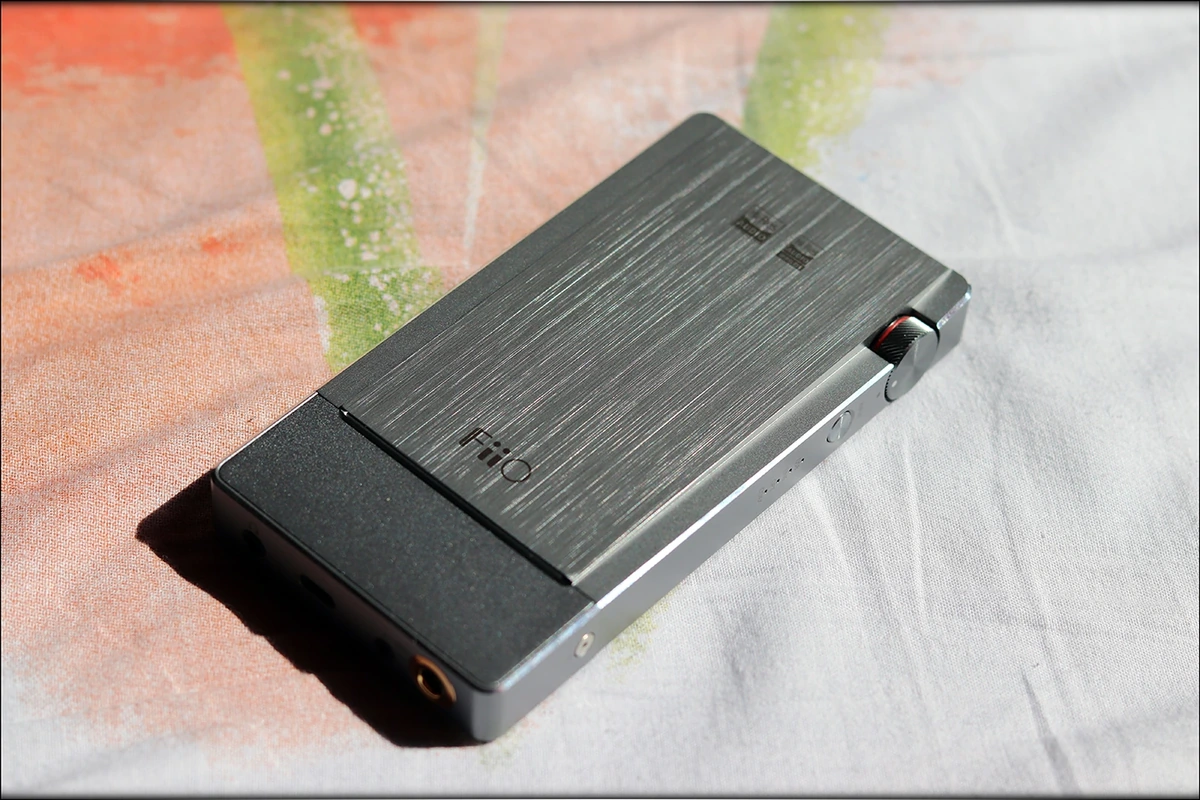
Just like I noted in my TR-AMP Video Review, having one device that does everything is quite ideal, but let’s be honest, Q5s really does everything. You have your selection of BT codecs, which goes all the way in. Quite literally, there’s no limit to it, everything that exists, FiiO supports for their Q5s.
The ergonomics are good, but you should know that Q5s needs some space. This being said, it needs less space than TR-AMP, which has that volume knob that needs to be protected, but needs similar space as xDSD from iFi which also tends to get a bit warm during usage, and may heat up if placed inside a pouch.
The battery lasts the same, or even more than most competitors, making Q5s a really good option to take outdoors. Even if you decide to go hiking, to escape from the endless torment of today’s city stress, Q5s should be able to keep up with you, and you’ll have a great time. Just make sure to either use something that’s open by design, so bears don’t eat you up, don’t forget, when going portable, you should be double as aware of your surroundings if you’re listening to music. Especially if you listen really really loud.
You should take into account that I was able to hear some EMI and some background noise, something going on for sure, when using Q5s in BT mode, and with really sensitive IEMs. FiiO’s own FH7 reveals this, although it can be noticed with Final B1 as well.
At any rate, Q5s is a really fun portable and outdoors device.
Comparisons
For the comparisons part of this review, Mojo, the bonus will be the first, as Chord never gets a second place. There’s also iFi xDSD, which is the rightful direct competitor to Q5s. XD-10 Poke is another direct competitor, although it is slightly less known. The newcomer, TR-AMP from Earmen, has only just appeared, but may very well be the one that becomes your choice, based on what features you need from your portable DAC/AMP, since it does not have all the features of Q5s.
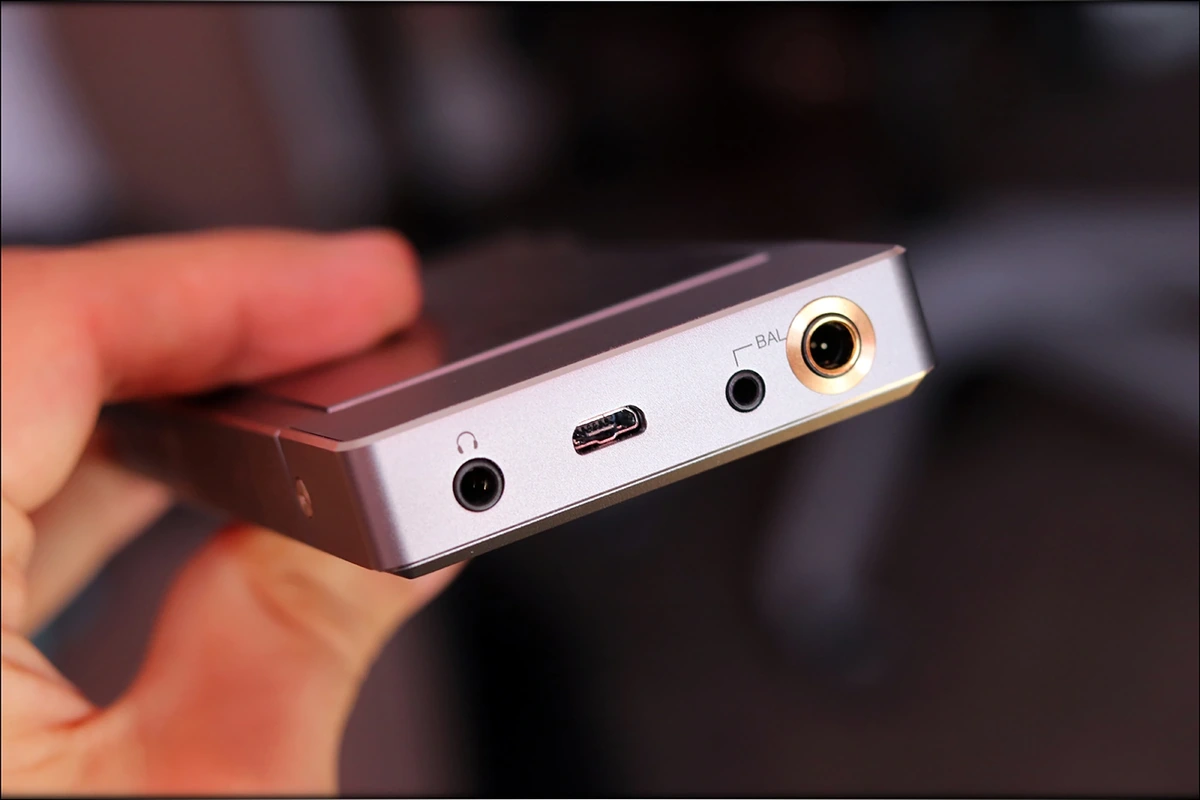
FiiO Q5s vs Chord Mojo (350USD vs 400USD)
Why don’t we dig right in, with the comparisons? Mojo has almost no package to speak about, so you won’t get the extras with it. This being said, if you like balls, especially colored glowing balls, Mojo has something for you in store, as for its volume control, as well as its input selection, you have a few clicky balls as the main interface. Compared, Q5s looks much easier to read and understand, but less mysterious and less magical. Mojo runs a bit warmer than Q5s, but it has two headphone outputs, both in the 3.5mm format, so you can listen to music with your dear ones. Mojo also has an optical input, as well as a coaxial input, but it doesn’t have a bluetooth input, unless you purchase Poly as well. Mojo also works with iPhones, as well as Android phones, and it also has a microUSB port, rather than a Type-C port.
I’m looking forward to both companies releasing a Type-C powered version really soon to be honest. The sonics are actually very different, and if you’re a fan of Mojo, and its creamy, smoother, thicker sound, Q5s sounds much more open, more linear, but lacks the fluidity of Mojo.
Q5s is more sparkly in the treble, although both have a really smooth treble texture, and both are very refined in their top end. Both Q5s and Mojo have good detail, but if I were to call which has the better detail, Mojo has the better bass detail, Q5s’s bass is not its strong point. Q5s has better midrange and treble detail, and a bit more engagement, although both are fairly dynamic and punchy. In fact, Mojo’s a bit more punchy thanks to its better, deeper bass. Two great options, each for a different taste.
FiiO Q5s vs iFi xDSD (350USD vs 400USD)
iFi’s take on Music and portability lands much closer to Q5s than Mojo did, and although they both have a lot of similarities, they still manage to have differences, like the fact, that to use xDSD Balanced, you have to get a pretty proprietary 3.5mm Balanced adapter. This being said, the sound won’t be better than when using xDSD in single Ended mode, and if you want to improve on its sound, you have to get the xCan, which costs about as much as all of the amplifying modules available for Q5s. This being said, xDSD also has Bluetooth, and even aptX, but no LDAC and HWA, so if you’re looking for more advanced BT codecs, Q5s has it.
For most people, aptX should be enough, but LDAC really comes in handy if you like a better sound from the BT connection. None doesn’t erase the BT algorithms from the sound though, and most people can still tell BT and Wired apart, so you’ll be happy to know that xDSD has a very basic USB input that makes it compatible with any short OTG cable you will find on the market. Compared, you need to get a special cable for Q5s. In terms of sound, they actually come pretty darn close.
Q5s has a Bass Enhancer button toggle magic touch, while xDSD comes with a 3D Soundstage toggle, as well as an X-Bass setting, which enhances the top and the low end on xDSD. Without any enhancements active, xDSD has a bit more dynamic, and a slightly more punch, but Q5s is wider, has more detail, more clarity, and sounds more smooth in the treble, making it more refined. If you want the best BT compatibility, Q5s has that, and on the sound, it really depends on what you price the most.
FiiO Q5s vs xDuoo XD-10 Poke (350USD vs 250USD)
XD-10 Poke was a monster in terms of driving power and actual sound, but the whole design is quite spartan and doesn’t feel anywhere near as polished and well-thought as Q5s. The package of XD-10 though, is as good as the one for Q5s, as it also comes with a lot of extras. XD-10 has a little display at the front, which makes it easier to read than Q5s. There’s a 3.5mm LO and 3.5mm Single Ended output for XD-10, which is not quite as good as the bouffet of outputs on Q5s. Both are capable of DSD, and both are capable of Hi-Res, and both devices work with Android and iPhones. Similar battery lives as well.
The USB input found on XD-10 is the same as the one found on xDSD, where you can use any short OTG you can find to connect it, and you don’t have to search for extra cables. There’s a separate charging port on XD-10, which isn’t found on Q5s, as Q5s uses the same port for Charging and music playing. XD-10 has a selection of Filters, which sound pretty similar to each other, it also has a gain setting, and it also has a bass boost setting, although it is stronger than the one found on Q5s, coloring the sound more.
The sound without any enhancements active is leaner, cleaner, more refined, wetter, with a more liquid overall presentation for Q5s. XD-10 has a harder edge, with more dynamics and more punch, also more presence in general. If you enjoy a forward presentation that attacks you like an army of mosquitoes in the mid of August, you’ll like XD-10, but if you like a creamy presentation, like sliding on a river of yogurt, Q5s should be better. You should also notice that XD-10 Poke does not have a Balanced output at all, where Q5s has a good selection of them.
FiiO Q5s vs Earmen TR-AMP (350USD vs 300USD)
When thinking of purchasing a DAC/AMP in 2020, you should totally consider Earmen TR-AMP, which costs pretty much the same as Q5s, or a bit less actually. The package is similar, or actually better on Q5s, since TR-AMP comes with just one rubber strap, and I think I needed two, but I’m good using one as well, because Q5s comes with a rubber separator, where TR-AMP has rubber feet to separate it from your phone, so just one rubber band can work okay.
The build is simpler for TR-AMP, and there are no sonic enhancements, compared to Q5s, which has a Bass Boost, as well as a Gain slider. TR-AMP has a Type-C USB port, though, and has RCA outputs as well, for you to use as a DAC in your desktop setup. TR-AMP has 6.3mm and 3.5mm outputs, where Q5s has two extra balanced outputs, but no large 6.3mm output. It won’t drive as hard to drive headphones as TR-AMP though, you should remember that I managed to drive HE6SE from TR-AMP, where I’d stop at Arya with Q5s.
The sound is different, Q5s is leaner, rich and organic in the mids, but TR-AMP has more punch in the bass. The treble feels similar, wet, extended, refined, and clean on both. TR-AMP has a more musical midrange, and a deeper stage, with more layers, where Q5s has a wider and more holographic stage. Q5s has a slightly blacker background, compared to TR-AMP. Q5s has much more features, including bluetooth, so for 50 USD more, you’re getting a better all-in-one solution from Q5s, if you need features and connectivity.
Pairing
FiiO made a statement about Q5s so the first IEM to be paired with it is their own FH7. There’s also Da Vinci X, which is great at revealing everything about a source, and for your (and my) enjoyment, HIFIMAN Sundara. Sundara will be replaced by Deva in most of my reviews, so keep an eye out for my video review of Deva, soon coming to Youtube.
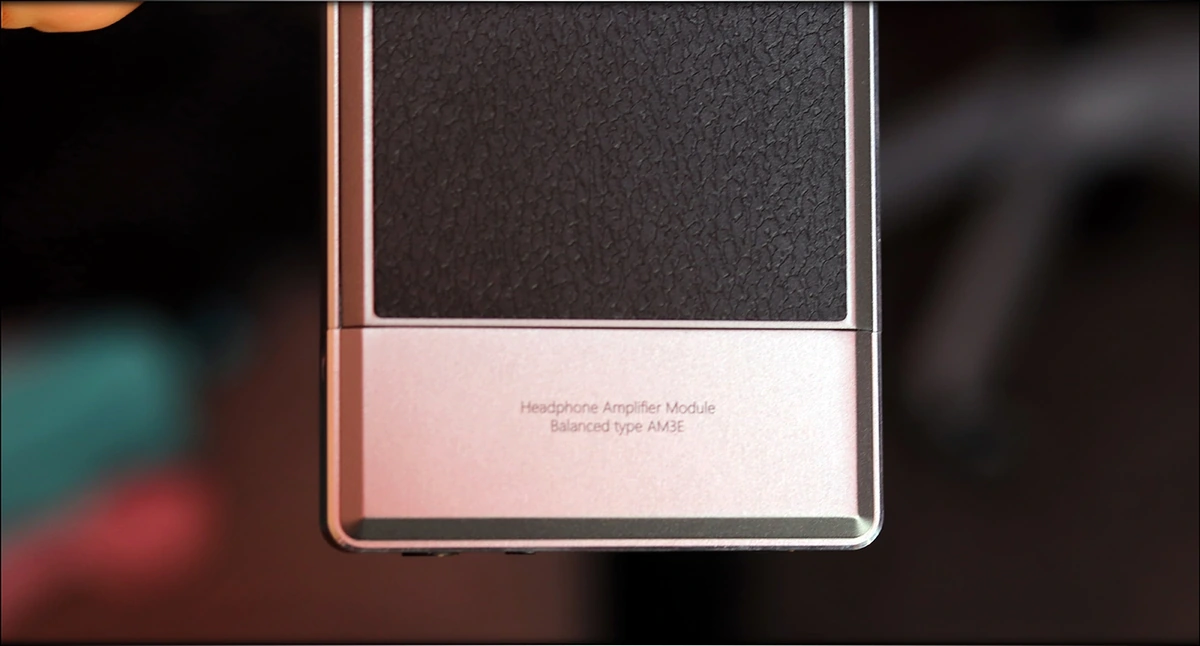
FiiO Q5s + FiiO FH7 – Starting with FiiO’s own top IEM, it has a good revealing ability, along with a rich layering for its stage, as well as an easy-to-drive impedance, so Q5s has no issues in getting it loud, punchy and crisp. Of course, you can use the Balanced cable if you want to take advantage of Q5s the best you can. There’s plenty of comfort in FH7, and pairing it with something as easy to connect to anything, like it’s almost sticky, as Q5s, you will find the pairing is a great balance of budget, especially if you rely a lot on Streaming and your smartphone. There’s also the sound, which compliments each other. FH7 is neutral, but it sounds musical, clean and rich with Q5s, thanks to its wet, smooth, refined nature. Q5s doesn’t have a strong punch, but FH7’s strength is in its mid and treble, which also works really well in this pairing.
FiiO Q5s + CTM Clear Tune Monitors Da Vinci X – Da Vinci X is also a great pairing, because it reveals just how clean, yet how the wetter nature of Q5s sounds refined, and not lack detail. In fact, it feels like FiiO’s implementation of AK4993EQ worked really well, and it is one of the most musical and smooth out there, which still has excellent detail and clarity. Da Vinci shows that Q5s has really nice textures, along with detail and a wide stage. You should keep in mind that the trick here’s that the detail is rich and natural, not edgy and digital.
FiiO Q5s + HIFIMAN Sundara – Sundara is what I used the most in testing many sources, not because it is necessarily the best, but a lot of people heard it, or HE400, He400i, He4XX, and other releases that are part of the same series. Hifiman Deva is slowly going to replace Sundara, thanks to a brilliant design and sound, so the Video to that will be fun. But before we get too much ahead of ourselves, the sound with Q5s is wide, clean and punchy. There’s a rich midrange, and the treble, which is usually a bit sharp and hollow on sundara, is now richer, smoother, wetter and more natural. The bass is also clean, although if you want a bit more impact, you should engage the Bass Boost of Q5s. There’s pretty much enough driving power behind Q5s for Sundara, so don’t worry, despite there being options with more power, FiiO put enough power in their Q5s.
Value and Conclusion
The value of Q5s is probably its biggest advantage, as it comes at the pocket-friendly price of 350 USD. There are flagship DACs out there that have less interesting actual DAC chips, which are priced more, and don’t have even half of the features of Q5s. M2Tech Young MK III, for example, doesn’t have all the BT codecs that Q5s has, but costs way more as a DAC. For the driving power, and given it is a modular device, it immediately makes a good point of having a good value, when placed against something like Pro-Ject S2 Digital, which doesn’t have the same driving power, but is a desktop unit, and costs more. Indeed, value is strong with Q5s.
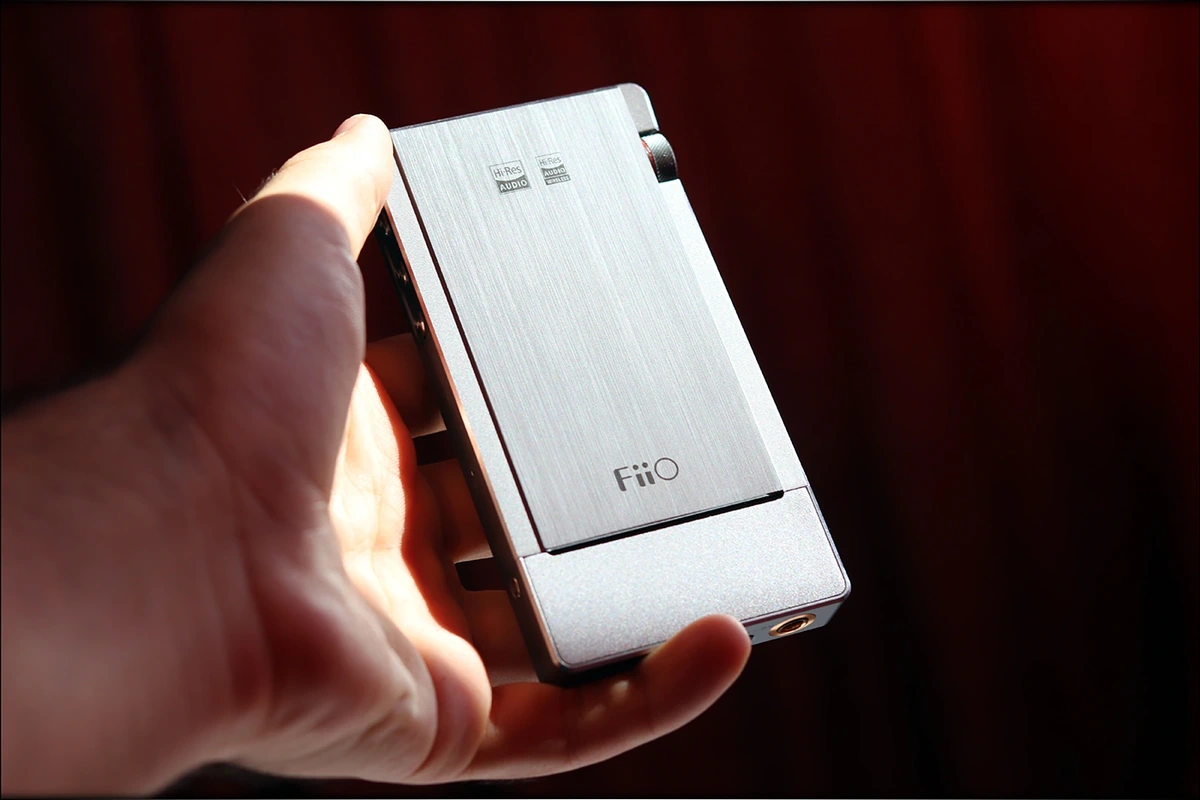
After all, the package is also great, FiiO bundles a lot of extras with their devices, so you can strap Q5s to any smartphone you want, but also have the cables necessary to make the process hassle-free. Not only that, but the package presents Q5s as the high-end device it is.
In terms of build and features, it is packed. Starting with all the Bluetooth Codecs you can dream of, driving power enough for Sundara, Verum One, and even Rosson RAD-0, having both a Single Ended and Balanced outputs, having an auto turn-off function, and having enough inputs for you to connect it to anything you desire, Q5s is indeed rich in features.
With a sound that is clear, crisp, has zero hiss even with sensitive IEMs, but also is wide, and has a nice, neutral tuning that works well with warmer and thicker IEMs and Headphones, Q5s manages to stay in line with its competitors, and prove it is worth the asking price of 350 USD.
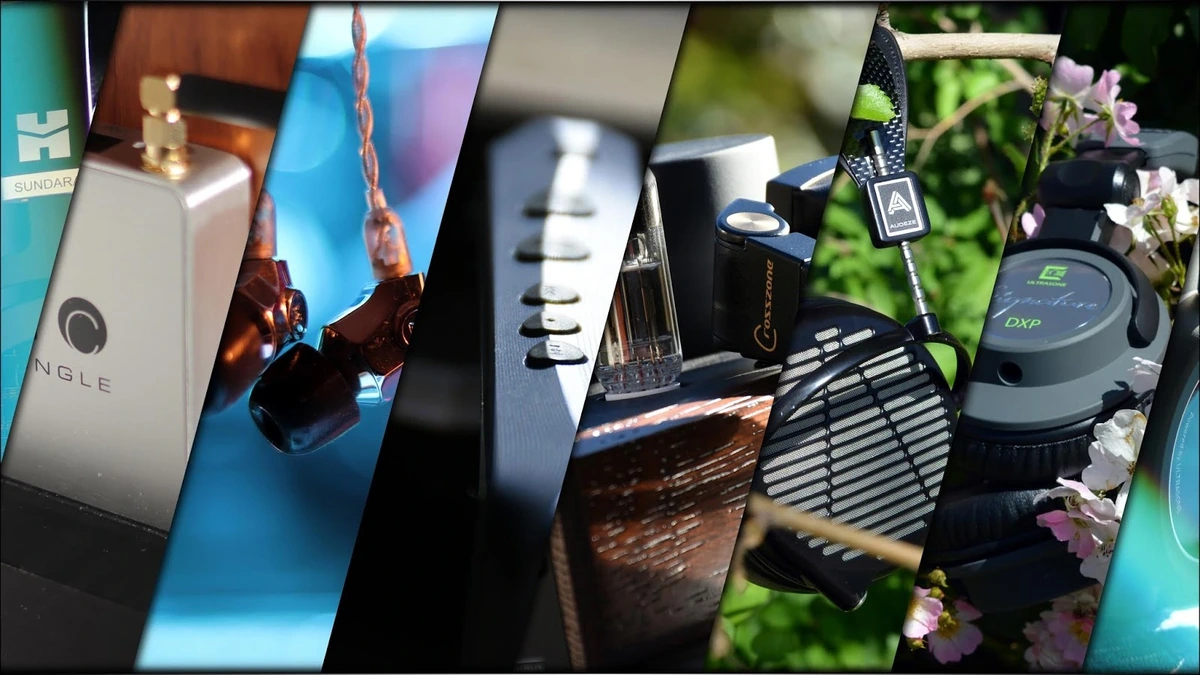
Before the end of this review, I’d like to add Q5s to Audiophile-Heaven’s Hall Of Fame, for its features, clean sound, modular design, design, which includes both Balanced and Single Ended outputs, large number of inputs, and for its excellent overall value.
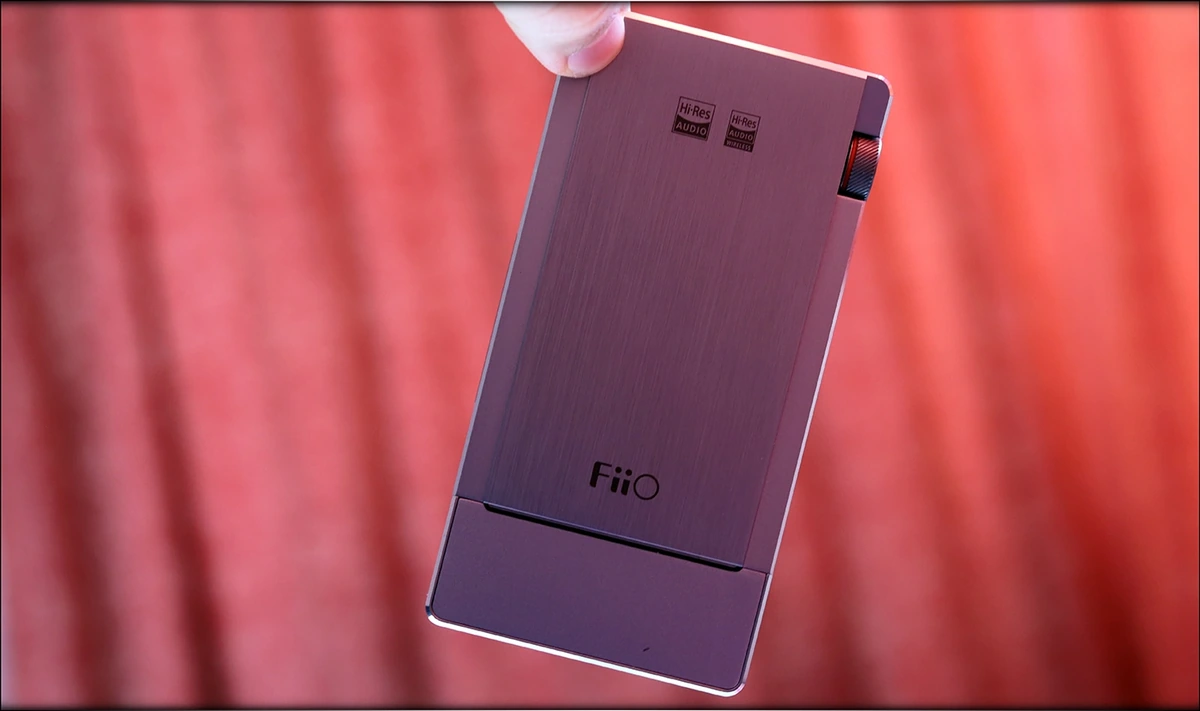
At the end of this review, if you’re looking for one of the best DAC/AMPs in the market, Q5s surely is one of the best. Just make sure to check my comparisons, because depending on what you need your DAC/AMP to do, there are a few options, each tailored for someone.
Product Link
You can get FiiO Q5s from www.amazon.com here: https://www.amazon.com/FiiO-Bluetooth-Amplifier-Computers-Coaxial/dp/B07TXNDZHZ/
--- Please remember to stay safe, and always have fun while listening to music!---
- If you have a dime to spare, please donate, and help us! It would make the day brighter for me and my wife-
Full Playlist used for this review
We listened to more songs than those named in this playlist, but those are excellent for identifying a sonic signature. I recommend trying most of the songs from this playlist, especially if you’re searching for new music! The playlists are different for Spotify, Tidal and Youtube, and based on the songs I enjoy and are available on each!
https://www.youtube.com/playlist?list=PL_cjBXGmwSHSdGcwuc_bKbBDGHL4QvYBu
https://open.spotify.com/playlist/5J3oloz8Riy9LxEGenOjQ0?si=979ba4f082414be7
https://tidal.com/browse/playlist/330fd544-8e5b-4839-bd35-676b2edbb3d5
--- Contact Us ---






Oh my goodness! Impressive review dude!
[…] Nano BL vs FiiO Q5 (AMP5) – We know that most of our readers seek this part the most, so let’s get started […]
Loving your reviews!
Tons of nice info, and I love the comparisons you make, really helpful! I ended up getting Earmen TR-AMp thanks to your amazing review, but I’m considering upgrading to Q5s sometime in the near future. Wanted to thank you for all your hard work!